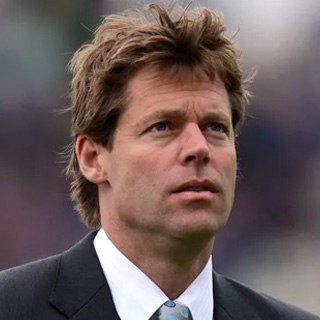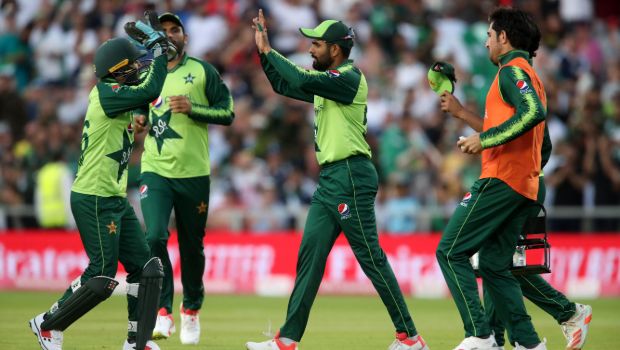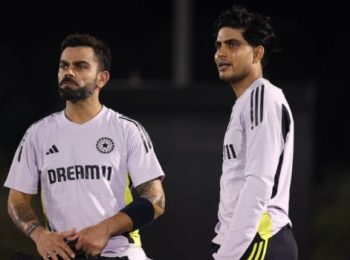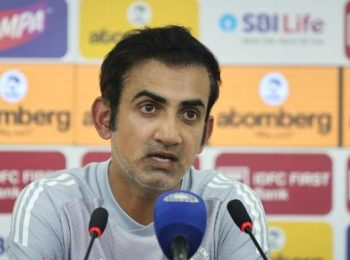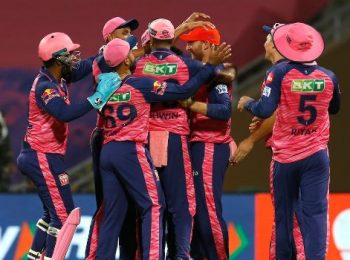Pakistan is experiencing a historic moment, hosting its first ICC tournament since 1996—a significant milestone after years of security concerns. It’s a fantastic opportunity for cricket to thrive in the country once again.
Looking at the competition, India stands out as the clear favorite. They have a well balanced squad with strength in all departments, making them a formidable contender. Meanwhile, South Africa poses a serious threat as well, with the potential to challenge any team on their day. I’ll dive deeper into these teams shortly later in the article.
Let’s start firstly with Afghanistan. They are emerging as a serious contender rather than just an underdog. They no longer see themselves as mere minnows; they genuinely believe they can compete with and defeat top-tier teams. That mindset shift makes them a side to watch in this tournament.
Afghanistan has a strong spin attack, with four quality options that will be key to their success in this tournament. One player to watch is Azmatullah Omarzai. I feel he is a player who is yet to fulfil his immense potential at international level. However, this tournament could be his breakthrough moment. I’ve always rated him highly—while he hasn’t always delivered with both bat and ball, his potential is undeniable.
At the top of the order, Afghanistan leans heavily on Rahmanullah Gurbaz and Ibrahim Zadran. Their success will be crucial, but the team will need contributions from others to avoid being overly reliant on them. Afghanistan’s main challenge in the tournament will be finding stability in the middle order. As mentioned earlier, they can’t afford to be too reliant on the top order. If players like Omarzai step up and contribute in the middle, it would significantly strengthen their batting lineup.
In terms of bowling, Afghanistan has the potential to trouble teams, particularly England. Their match against England will be pivotal, and I believe Afghanistan will go into that game feeling confident about their chances. With two spots up for grabs, Afghanistan should not be written off—they could be a serious contender.
Talking about England, they face a few challenges. They’re dealing with injury concerns that need to be addressed, and their pre-tournament form hasn’t been ideal. Their recent outings in India, including three ODIs and five T20s, didn’t go as planned, which raises questions about their readiness.
Brydon Carse’s fitness will be a key factor—if he’s available, he adds significant value to the squad. As for the batting order, if Tom Bantam plays, I’d slot him in at number three, unless the openers put together a strong partnership, in which case Joe Root should come in. A flexible approach here would serve England well.
Ultimately, much will depend on Harry Brook finding form. He’s been quiet in India, and England will be hoping he delivers when it matters most.
While spin will play a crucial role in the tournament, the pitches aren’t expected to offer excessive turn. Instead, the key will be taking the pace off the ball, which could work in Brook’s favor, given his struggles against sharp turn. Surfaces in Karachi and Lahore, in particular, are unlikely to behave like the traditionally spin-friendly tracks seen elsewhere in the subcontinent. This makes Root a vital player for England, given his ability to handle such conditions effectively.
Now, moving on to Australia. Assessing their chances is tricky, given their recent struggles in Sri Lanka. The team has been hit hard, with five frontline players unavailable due to injury or absence—a significant setback, particularly for their bowling attack, which has been severely weakened.
With those challenges, Australia will need their key players to step up. Glenn Maxwell has been quiet lately, so his return to form will be crucial. One player to watch is Josh Inglis—he may not yet be a household name in international cricket, but he’s a talented and classy performer with the potential to make an impact.
Adam Zampa’s role has never been more crucial for Australia. With their bowling attack weakened, he will have to shoulder a significant burden to keep them competitive. His ability to control the middle overs and take key wickets will be vital.
That said, Australia has historically been one of the best tournament teams, and with a leader like Steve Smith, they can never be written off. However, given their current challenges, it will be an uphill battle for them to perform at their best.
Moving on to South Africa—they remain one of my favorite sides. I’ve analyzed them multiple times, and I genuinely believe they are among the strongest contenders in this tournament.
South Africa is arguably the biggest beneficiary of the IPL, with many of their top players gaining invaluable experience in Indian conditions.
One standout for me is Heinrich Klaasen—I’d pick him as a strong contender for Player of the Tournament before the action even begins. His ability to handle spin makes him a key asset for South Africa. While he may not top the run charts, his impact in crucial moments could be greater than anyone else’s.
South Africa boasts a formidable bowling attack, featuring Tabraiz Shamsi, Keshav Maharaj, and Kagiso Rabada. With so many frontline pacers missing from the tournament—including Jasprit Bumrah, key Australian quicks, and Anrich Nortje— Rabada’s ability with the new ball becomes even more valuable.
Nortje’s absence is a significant blow for South Africa, but even without him, they remain one of the strongest teams in the competition. They will be a tough side to beat.
India stands out as the strongest team in the competition. However, they do have a slightly unbalanced squad, which is unusual for them. Specifically, they seem to have an excess of spinners. Despite that, as long as injuries don’t derail their plans, their squad remains well-rounded with plenty of options. Coming off strong form, particularly from the England series, they’ll be tough to beat.
Kuldeep Yadav is a key player for India in my opinion. While it’s unclear if he’ll start, he should definitely be in the lineup. They might opt for Varun Chakravarthy, but for me, Kuldeep is the clear choice.
I’d include Arshdeep Singh and Shami in the playing XI, while probably leaving out Harshit Rana. Hardik Pandya is going to be crucial with both bat and ball—his versatility makes him an essential part of India’s lineup.
Looking at India’s top order, they’ve been in excellent form, especially in their recent match against England. Virat Kohli, Rohit Sharma, Shubman Gill, and Shreyas Iyer all scored runs, and this consistency at the top is a key ingredient for their success.
As for the selection of certain players, I still don’t quite understand how Rishabh Pant doesn’t make the final XI, but that’s a decision for the selectors. For me, he deserves a spot in the starting lineup.
On the other hand, Pakistan has a few issues to address if they’re to compete at the highest level. They didn’t perform anywhere near their best during the tri-series. Their bowling attack, which was expected to be one of their strengths, lacked potency, raising concerns heading into the tournament.
Babar Azam’s form at the top of the order is a concern as well. However, Fakhar Zaman remains a key strength for them, and their middle order—featuring Mohammad Rizwan and Salman Agha—looks solid and in good shape. This should provide some balance to the team.
That said, they’re definitely missing a player like Ayub, and his absence will be felt.
Pakistan is a team to keep an eye on—they’re immensely talented, and with the advantage of playing in home conditions, you can never count them out. However, they’ll need to find their form quickly in this short tournament.
As for Bangladesh, the player who stands out for me is Nahid Rana. I’ve been saying for a while that he’s a superstar in the making. With many fast bowlers missing from the tournament, Rana has the chance to shine. He’s one of the most exciting young talents
in cricket right now, and this tournament could be the perfect stage for him to prove himself—provided he stays fit and strong.
While I don’t expect him to be the tournament’s leading wicket-taker, I believe he’ll be one of the most entertaining players to watch. I’m hoping he can bowl at speeds over 150 km/h, which would make him a force to reckon with.
Rana could be the key player to help break through top-order defences, creating opportunities for Bangladesh’s spinners, who are a real strength. Rishad Hossain, in particular, has been in excellent form recently and could be a handful in the middle overs. If Rana can help create those breakthroughs up front, it will significantly boost their chances.
Don’t count them out just yet. Soumya Sarkar is also in good form. I watched him play in December, and he seemed to be nearing his best, which bodes well for Bangladesh in this tournament.
Mushfiqur Rahim and Mahmudullah are two players I’ve always admired. Mahmudullah, at 38, is still going strong, and I’m really pleased to see him included. Similarly, Rahim, at 37, brings valuable experience to the squad. Both players add a wealth of experience to the team, which will be crucial in such a big tournament.
Finally, New Zealand is a team that you can never count out. They likely have one of the most balanced squads in the competition, with a spin attack that is both experienced and incredibly skillful—Mitchell Santner, Michael Bracewell, and Rachin Ravindra are all key players.
One challenge for them, however, will be how they structure their top order before their opening match against Pakistan. Devon Conway, for me, should definitely be in the starting lineup, but he hasn’t always been a consistent starter for them. How they handle this will be crucial.
If Will Young and Ravindra are both fit—though there’s some uncertainty around Ravindra’s fitness—my preference would be to go with Ravindra and Conway at the top. However, New Zealand seems keen on giving Young a spot, which is perfectly reasonable. They’ll just need to figure out the best combination for the opening pair.
Kane Williamson at three and Mitchell at four are their rock-solid positions. Both players are exceptional—excellent at reading conditions, in good form, and fresh off runs in the tri-series. As for their pace attack, Lockie Ferguson and Matt Henry will certainly take care of things with their proven skills.
New Zealand have the ability to take pace off in the middle overs, and they’re definitely one of my top picks. I believe they’ll make it to the semi-finals. For me, it’s India and New Zealand in the semi-finals, with South Africa progressing from their group.
As for the final spots, if you’re looking for a patriotic pick, you can’t rule out England. They might hit their stride and find some form and resilience along the way. While Australia and Afghanistan remain strong contenders, I’d lean towards England for that final, semi-final slot.
It’s going to be an exciting series, and the team that comes out on top will likely be the one that is the smartest and most strategic, which is why I’m backing India more than anyone else. The key will be to read game situations better than the rest.
When people ask me about the difference between T20 and ODI cricket, it’s simple: in T20, the game plays out quickly in front of the players, whereas in ODIs, there’s more room for strategy and reading the game as it evolves over a longer period.
In ODI cricket, what’s required isn’t always immediately obvious on the scoreboard. Unlike T20, where the game plays out quickly, ODIs demand a more strategic approach. You have to read the ebbs and flows of the game, which are constantly shifting. That’s where players like Virat Kohli shine—there’s no one better in the world at identifying match situations.
The teams that can read these situations and possess wicket-taking options in the middle overs to break stubborn partnerships are the ones that will thrive. I truly believe India fits this bill, and they, along with similar teams, will be the ones to flourish in this tournament.






